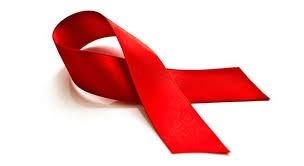Gay and bisexual men still make up the majority of new HIV diagnoses in B.C., said provincial health officer Dr. Perry Kendall on Monday.
Although there has been an overall decline in HIV cases, there's not been a significant decrease in the last 10 years among gay and bisexual men, indicating more needs to be done in the way of testing.
Kendall presented the HIV, Stigma and Society: Tackling a Complex Epidemic and Renewing HIV Prevention for Gay and Bisexual Men in British Columbia report Monday.
Because people are still not comfortable identifying themselves as gay or bisexual to their health care providers, especially those who are in northern rural areas, they are not getting the regular testing they need, said Kendall.
"This is something that we need to address in terms of culturally appropriate and sensitive care," said Kendall.
Routine testing put into place now in hospitals and clinics within the province, and especially in northern B.C., is key to diminishing the risk of spreading HIV. Early detection is key to managing the disease that is considered chronic but no longer has to be a death sentence.
HIV testing is now offered as part of regular patient care in the north at St. John Hospital in Vanderhoof, Stuart Lake Hospital in Fort St. James and the Fraser Lake Community Health Care Centre in Fraser Lake.
In Prince George the testing has been offered since last December to all UHNBC patients having blood taken while in hospital for another reason, helping to lift the stigma of being tested for the disease.
Acute care sites that will begin to offer the testing later in 2014 include the Lakes District Hospital and Health Centre in Burns Lake and the rest of northern B.C. communities will see routine testing done by 2016.
Once in treatment, an HIV patient's suppressed infection leaves little chance of spreading to sexual partners and this is a big part of achieving the ultimate goal, an HIV-free generation in the near future.
Other issues are also considered to be part of the reason gay and bisexual men are the highest for testing HIV positive, including stigma and marginalization.
"It's rather sad to see that it's the youngest cohorts who are reporting the highest levels of stigma, this despite what I thought had been considerable progress in trying to de-stigmatize and just bring society up to a level of acceptance and rational, ethical behaviour," said Kendall. "So why is this important? The greater the experience of stigmatization and marginalization the worse the health outcomes appear to be."
The more gay and bisexual men experience negative behaviours the more likely they are to report poor mental health outcomes like sadness, depression and excessive substance abuse, Kendall added. This is significant because the worse a person feels about themselves, the more sexually at-risk the behaviour.
"In other words, reaching out, trying to be held, to be loved by somebody can increase your risk," said Kendall. "The more stigmatization and marginalization is experienced by men, the poorer the mental health outcomes, the higher the risk behaviours, all leading to a higher risk of HIV acquisitions."
The report also recommended that the Ministries of Health and Education, regional health authorities, provincial education partners, and other key stake holders should collaborate on the development of a comprehensive sexual and reproductive health education strategy for B.C. This strategy should incorporate a comprehensive school health component, be inclusive of all gender and sexual identities, and integrate health promotion messages that challenge stigma and foster protective factors, including the development of decision-making skills related to sexual and risk-taking behaviour.
"I think the Ministry of Education is on side with this, they have programs that they are pushing out that are good programs and the challenge I think is to get some of the 62 school boards across the province to pick up on this and implement this programming," said Kendall.



